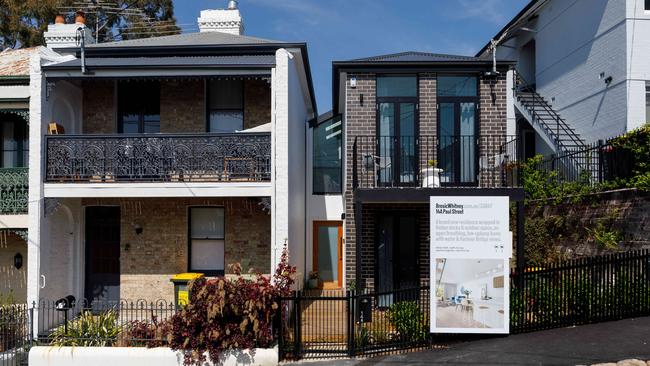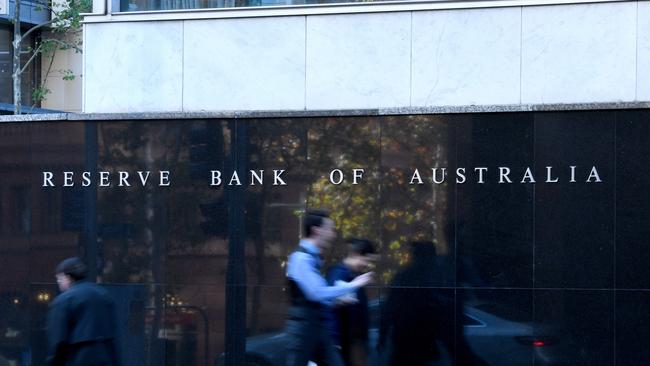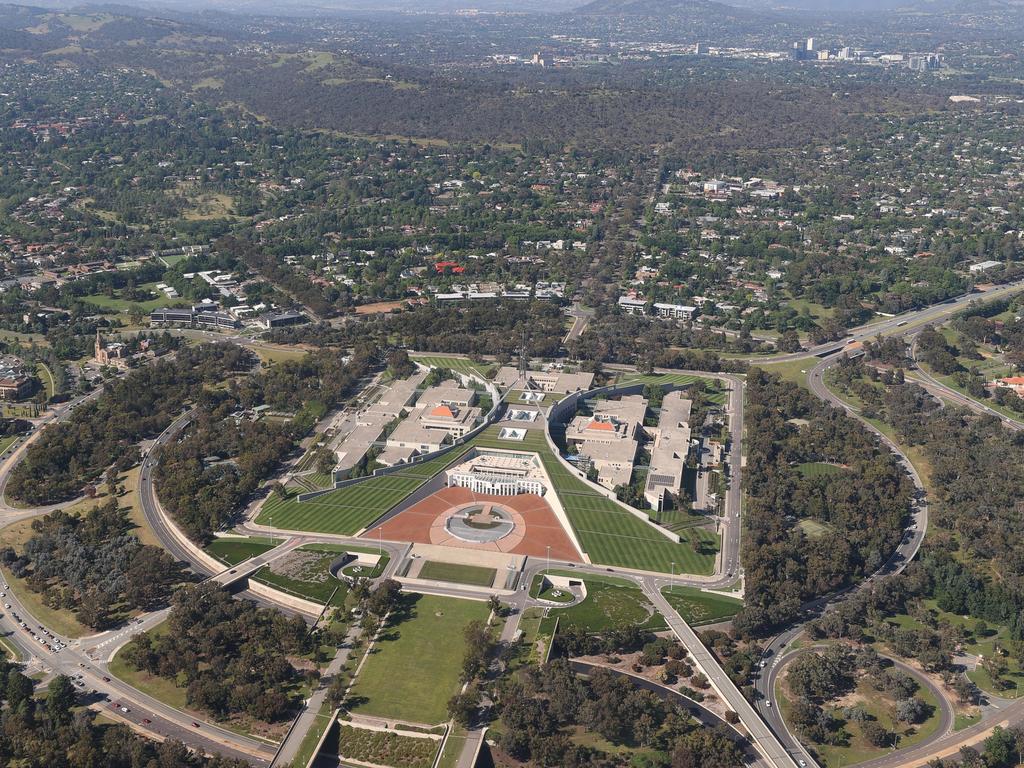Is Australia still the lucky country? See what our GDP ranking shows
Australia is a Florida of the south but with Copenhagen-quality coffee shops. Or in other words we’re a little bit Paris and a big bit Dallas. So is Australia still a ripper place to buy property?

Is Australia a good place to invest in property, or are there better options across the globe?
It is a fair question for anyone in business to ask themselves. It’s a question that should be discussed at a board level at least once a year.
And while there are many concerns about today’s cost of living, the cost of construction and even the sluggishness of the Australian economy, there is still every reason to be confident about Australia as a place to invest, and especially in property.
Whether Australia is a good place to invest is really a question of perspective.
Let’s compare the relative wealth of the average Australian in 2024 with the situation 30 years ago in 1994.

Data released by the International Monetary Fund in April tracking gross domestic product by country by year (in US dollars) effectively shows the rise and fall of spending power. Generally, the greater the GDP per capita, the greater the ability to allocate spending to housing and to quality of life. (While this logic doesn’t apply in every country, it has been a factor driving the Australian housing market.)
I like broad brush, big-picture datasets that are maintained over decades and are assembled by a recognised group using a consistent and transparent methodology. Of course, GDP per capita is a blunt average. These figures of course rise and fall with currency conversion to USD. Also, GDP per capita can be pushed up or down by significant changes in immigration policies.
Nevertheless, even with its limitations, GDP per capita is a reasonable basis by which we can rate Australia as a place capable of delivering a good quality of life. Indeed, all top-rating countries by this GDP-per-capita measure offer a first-world standard of living.
So much about this dataset makes sense.
Using GDP as a guide
On the measure of GDP per capita – a rough indication of income per person – Australia ranks 10th out of 195 countries. Australia’s 2024 GDP per capita ($66,589) sits below Denmark ($68,898) and above the Netherlands ($63,750).
More importantly, if the Australian GDP per capita varied up or down by 10 per cent, our ranking would rise/fall by just one notch.
The Australian standard of living, as suggested by this dataset, is similar to Denmark and the Netherlands.
And as a frequent visitor to Denmark over the last decade (for family reasons), I’d have to concur. The cafes of central Copenhagen are remarkably similar to places like Melbourne’s Fitzroy and Sydney’s Surry Hills.
Australia can be represented as a US-state-scaled market.

What I find most revealing about this ranking is the fact that of the nine countries with a higher GDP per capita than Australia, only the US ($85,373) offers a larger population (342 million).
There are parts of Europe, the Middle East and Asia that offer a higher GDP per capita than Australia but only in the format of city states, such as Luxembourg (population 660,000), Qatar (population 3m) and Singapore (6m). Australian businesses looking to expand overseas might like to consider markets with Australian spending power but also with some critical mass.
No point going all the way over there to access a small (but rich) market.
Australia’s assets
Australia offers global property players American/European spending power all wrapped up in a market the scale of another US state such as Texas (population 31 million) or Florida (population 23 million).
Australia is a Florida of the south … but with Copenhagen-quality coffee shops. Another way to look at the Australian market is to say we’re a little bit Paris and a big bit Dallas.
Canada is often cited as a similar market to Australia: vast, English-speaking, good quality of life.
But the IMF databases place Canada (population 39 million) at No. 16 with a GDP per capita of $54,866 – 16 per cent below the Australian figure. (I’d stick with Texas and/or Florida as options, largely because quality of life will be shaped by access to a pleasant if not liveable climate in the future.)
Looking back, Australia in 1994 was still a first-world nation … just.
The same database using the same methodology published by the IMF shows where Australia ranked 30 years ago in 1994. Here was a time when Australia was emerging from the 1992 recession. These were uncertain if not tough times, but Australia was still very much a first-world nation. In that year, Australian GDP per capita (in USD) was $19,749, which placed our nation at position No. 20, just below Canada.
Something quite extraordinary happened over the last 30 years to catapult Australia 10 notches up the global ranking of countries when measured by GDP per capita. Canada too jumped a few spots: up from No. 19 to No. 16. Other nations were also catapulted forward: Ireland jumped from No. 24 to No. 2; Qatar jumped into the top 25 and now sits at No. 8; and Singapore jumped from No. 15 to No.5.
Migration boom
The reason, I think, for Australia’s meteoric rise – along with other big risers – is that we benefited mightily from globalisation, and especially from the rise of China. Indeed, rising-force Qatar and mineral-rich Australia both offer resources to a China-boosted global economy.

To be fair, we have also augmented our resources growth piston with the creation of new export businesses like international education and tourism. Singapore, I am sure, is positioning itself as the free-enterprise business capital of Southeast Asia, and Ireland seems to have somehow attracted a cluster of global business headquarters following the global financial crisis.
This leads to the question of just where have Australians spent their wealth.
The IMF’s GDP per capita dataset tells a powerful story. In a free and fair comparison of the national spending power of the people of every country over 30 years, the Australians – along with a few others – have fared better than most.
It’s the kind of analysis that prompts the question: where have the Australian spent their accumulated wealth over 30 years?
Have we spent it on defence? Not particularly.
Have we created a sovereign wealth fund? Well, yes, maybe, kind of, with the establishment of the Future Fund as well as with the creation of a national superannuation guarantee program.
Where have we spent our money?
Have we spent our wealth on social wellbeing? Perhaps, and especially recently with the cost escalation of the NDIS.
Or have we directed a good proportion of our rising wealth over the course of a generation into residential accommodation and into other forms of property, namely office, retail and industrial?
Some argue that GDP per capita is a flawed concept because income/wealth is not distributed evenly, let alone fairly, and while GDP per capita might be rising (over the long term) this hasn’t translated into greater spending power for the average Australian. This may well be the case, but this logic would also apply to other nations, too. I am sure that Ireland’s income distribution is just as flawed as Australia’s.

Nevertheless, the GDP per capita rankings do show the relative rise and fall of spending power in 195 imperfect economies over time. The unmistakeable conclusion that can be drawn from this dataset is that Australia, yet again, has proven to be the lucky country.
Imagine being brave enough – or foolhardy enough – to have established a home-building business in Australia just after a recession in 1994.
In hindsight, this was perfect timing due to favourably ascendant macro trends like globalisation driving the world’s insatiable appetite for Australian resources. Combine that with Australia’s rising immigration program, our venture into international education (requiring student accommodation), the pressing of baby boomers into their ‘forever home’ 40s (in the 1990s), and we have all the ingredients necessary for an era of rising property values.
The question is, where to from here? Australian resources are still in great demand. Immigration will surely remain high in an era of labour shortages. The universities will not accept (substantially) fewer students.
The millennials are now pressing into their forever-home 40s, and there’s been a 30-year cultural history of rising expectations in how the average Australian expects to live.
GDP per capita might be a blunt, and even from some perspectives a flawed measure, but over time this single ascendant metric shows how fortunate we are to be based in this land, this nation, this ripper spot, this Australia.
Bernard Salt AM is founder and executive director of The Demographics Group; data by data scientist Hari Hara Priya Kannan.






To join the conversation, please log in. Don't have an account? Register
Join the conversation, you are commenting as Logout